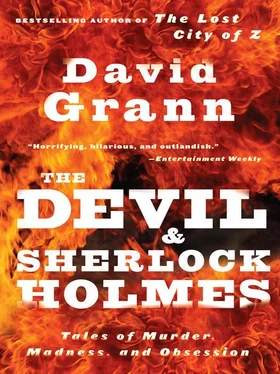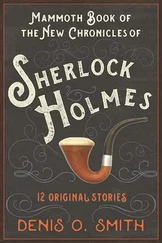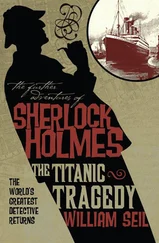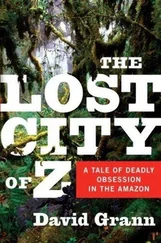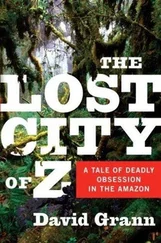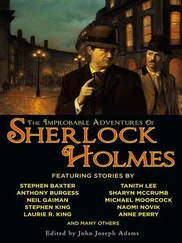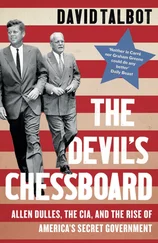The police found no sign of forced entry and assumed that Green had committed suicide. Yet there was no note, and Sir Colin Berry, the president of the British Academy of Forensic Sciences, testified to the coroner that, in his thirty-year career, he had seen only one suicide by garroting. “One,” Gibson repeated. Self-garroting is extremely difficult to do, he explained; people who attempt it typically pass out before they are asphyxiated. Moreover, in this instance, the cord was not a thick rope but a shoelace, making the feat even more unlikely.
Gibson reached into his file and handed me a sheet of paper with numbers on it. “Take a look,” he said. “My phone records.” The records showed that he and Green had spoken repeatedly during the week before his death; if the police had bothered to obtain Green’s records, Gibson went on, they would no doubt show that Green had called him only hours before he died. “I was probably the last person to speak to him,” he said. The police, however, had never questioned him.
During one of their last conversations about the auction, Gibson recalled, Green had said he was afraid of something.
“You’ve got nothing to worry about,” Gibson told him.
“No, I’m worried ,” Green said.
“What? You fear for your life?”
“I do.”
Gibson said that, at the time, he didn’t take the threat seriously but advised Green not to answer his door unless he was sure who it was.
Gibson glanced at his notes. There was something else, he said, something critical. On the eve of his death, he reminded me, Green had spoken to his friend Keen about an “American” who was trying to ruin him. The following day, Gibson said, he had called Green’s house and heard a strange greeting on the answering machine. “Instead of getting Richard’s voice in this sort of Oxford accent, which had been on the machine for a decade,” Gibson recalled, “I got an American voice that said, ‘Sorry, not available.’ I said, ‘What the hell is going on?’ I thought I must’ve dialled the wrong number. So I dialled really slowly again. I got the American voice. I said, ‘Christ almighty.’ ”
Gibson said that Green’s sister had heard the same recorded greeting, which was one reason that she had rushed to his house. Reaching into his file, Gibson handed me several more documents. “Make sure you keep them in chronological order,” he said. There was a copy of Jean Conan Doyle’s will, several newspaper clippings on the auction, an obituary, and a Christie’s catalogue.
That was pretty much all he had. The police, Gibson said, had not conducted any forensic tests or looked for fingerprints. And the coroner—who had once attended a meeting of the Sherlock Holmes Society to conduct a mock inquest of the murder from a Conan Doyle story in which a corpse is discovered in a locked room—found himself stymied. Gibson said that the coroner had noted that there was not enough evidence to ascertain what had happened, and, as a result, the official verdict regarding whether Green had killed himself or been murdered was left open.
Within hours of Green’s death, Sherlockians seized upon the mystery, as if it were another case in the canon. In a Web chat room, one person, who called himself “inspector,” wrote, “As for self-garroting, it is like trying to choke oneself to death by your own hands.” Others invoked the “curse,” as if only the supernatural could explain it. Gibson handed me an article from a British tabloid that was headlined “ ‘CURSE OF CONAN DOYLE’ STRIKES HOLMES EXPERT.”
“So what do you think?” Gibson asked.
“I’m not sure,” I said.
Later, we went through the evidence again. I asked Gibson if he knew whose phone numbers were on the note that Green had sent to his sister.
Gibson shook his head. “It hadn’t come up at the inquest,” he said.
“What about the American voice on the answering machine?” I asked. “Do we know who that is?”
“Unfortunately, not a clue. To me that’s the strangest and most telling piece of evidence. Did Richard put that on his machine? What was he trying to tell us? Did the murderer put it there? And, if so, why would he do that?”
I asked if Green had ever displayed any irrational behavior. “No, never,” he said. “He was the most levelheaded man I ever met.”
He noted that Priscilla West had testified at the inquest that her brother had no history of depression. Indeed, Green’s physician wrote to the court to say that he had not treated Green for any illnesses for a decade.
“One last question,” I said. “Was anything taken out of the apartment?”
“Not that we know of. Richard had a valuable collection of Sherlock Holmes and Conan Doyle books, and nothing appears to be missing.”
As Gibson drove me back to the train station, he said, “Please, you must stay on the case. The police seem to have let poor Richard down.” Then he advised, “As Sherlock Holmes says, ‘When you have eliminated the impossible, whatever remains, however improbable, must be the truth.’ ”
Some facts about Richard Green are easy to discern—those which illuminate the circumstances of his life, rather than the circumstances of his death. He was born on July 10, 1953; he was the youngest of three children; his father was Roger Lancelyn Green, a best-selling children’s author who popularized the Homeric myths and the legend of King Arthur, and who was a close friend of C. S. Lewis and J. R. R. Tolkien; and Richard was raised near Liverpool, on land that had been given to his ancestors in 1093, and where his family had resided ever since.
Nathaniel Hawthorne, who was the American consul in Liverpool in the eighteen-fifties, visited the house one summer, and he later described it in his “English Notebooks”:We passed through a considerable extent of private road, and finally drove through a lawn, shaded with trees, and closely shaven, and reached the door of Poulton Hall. Part of the mansion is three or four hundred years old.… There is [a] curious, old, stately staircase, with a twisted balustrade, much like that of the old Province House in Boston. The drawing-room looks like a very handsome modern room, being beautifully painted, gilded, and paper-hung, with a white-marble fire-place, and rich furniture; so that the impression is that of newness, not of age.
By the time Richard was born, however, the Green family was, as one relative told me, “very English—a big house and no money.” The curtains were thin, the carpets were threadbare, and a cold draft often swirled through the corridors.
Green, who had a pale, pudgy face, was blind in one eye from a childhood accident, and wore spectacles with tinted lenses. (One friend told me that, even as an adult, Green resembled “the god of Pan,” with “cherubic-like features, a mouth which curved in a smile which was sympathetic, ironic, and always seeming to suggest that there was just one little thing that he was not telling you.”) Intensely shy, with a ferociously logical mind and a precise memory, he would spend hours roaming through his father’s enormous library, reading dusty first editions of children’s books. And by the time he was eleven he had fallen under the spell of Sherlock Holmes.
Holmes was not the first great literary detective—that honor belongs to Edgar Allan Poe’s Inspector Auguste Dupin—but Conan Doyle’s hero was the most vivid exemplar of the fledgling genre, which Poe dubbed “tales of ratiocination.” Holmes is a cold, calculating machine, a man who is, as one critic put it, “a tracker, a hunter-down, a combination of bloodhound, pointer, and bull-dog.” The gaunt Holmes has no wife or children; as he explains, “I am a brain, Watson. The rest of me is a mere appendix.” Rigidly scientific, he offers no spiritual bromides to his bereaved clients. Conan Doyle reveals virtually nothing about his character’s interior life; he is defined solely by his method. In short, he is the perfect detective, the superhero of the Victorian era, out of which he blasted with his deerstalker hat and Inverness cape.
Читать дальше
